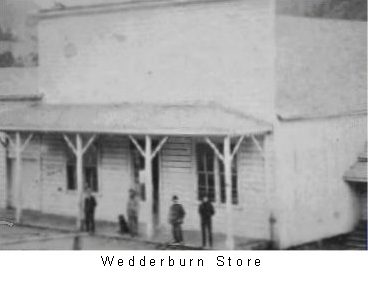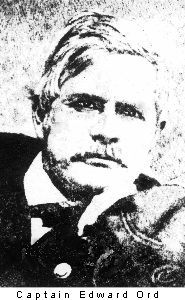Stay Away From Her, Or Else! *
During the early part of August, 1896, H. W. Fountain, a sewing machine salesman, left Marshfield, Oregon and headed south. He arrived in Wedderburn-Gold Beach and tried to sell some sewing machines before heading on to Crescent City, California. He only intended to stay a few days but he got involved in things other than business. Grant Baxter lived in the area and he thought that May Smith was his one and only, although she apparently did not feel the same way about him. When Baxter heard that Fountain had been visiting May Smith, he got very upset. On Friday night he informed May that if Fountain came to see her again he would kill him.
The next night the trouble began. Fountain had been out to Alf Miller’s house and picked up his oars to row across the river to Gold Beach. When he got near the Bayview Hotel** he met Baxter and the conversation immediately heated up. Baxter warned Fountain to stay away from May Smith, but Fountain figured it was none of Baxter’s business and told him so. Fountain was armed at the time and ready for trouble if it happened.
Baxter said, “I’ll see you again.” Fountain went across the river, where he told several people that he had been threatened by Baxter. Baxter went into the Bayview and talked the matter over with some others there. He told them that if Fountain did not stay away from May he would do him in. He then borrowed a pistol from a fellow, telling him that he wanted to do a little target practicing. The owner took the pistol back the next morning but Baxter borrowed it again. A little while later, E. A. Bean was getting a shave from Baxter and Baxter told him of the trouble he was having with Fountain. Baxter patted his pants pocket that showed the outline of a pistol, and told Bean that he was ready for Fountain. Later on Baxter obtained some cartridges from Dave Carey. He reloaded the pistol and placed it in his front, right hand pocket. That morning he visited May Smith. Now he had the pistol tucked in the band of his trousers in front and he told her it was for Fountain. He said he was ready for Fountain and would do him in.
Just after lunch the following day, Charles Leon had Baxter cut his hair. He noticed the pistol in Baxter’s pocket. He felt of the pistol and asked, jokingly, if it was for him. Baxter answered in an angry manner and Leon dropped the subject. After the hair cut was finished, Baxter and Leon left the Bayview. Leon heard some shots as he walked away, but he paid no attention to them.
Read more



